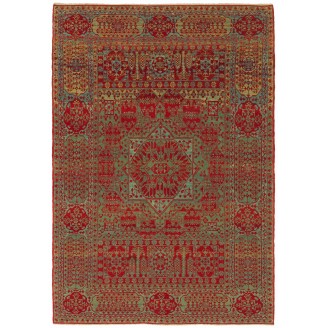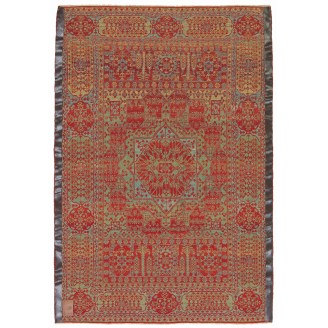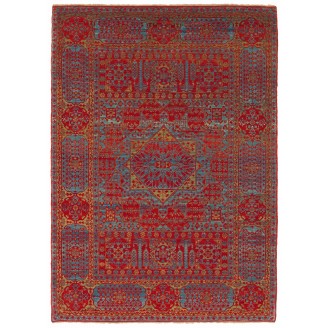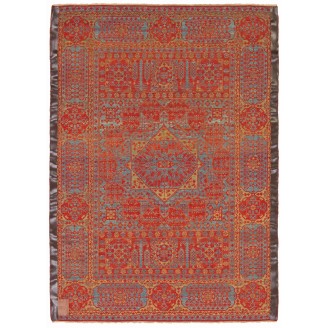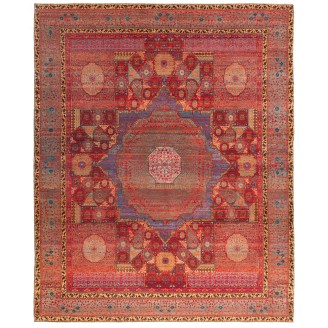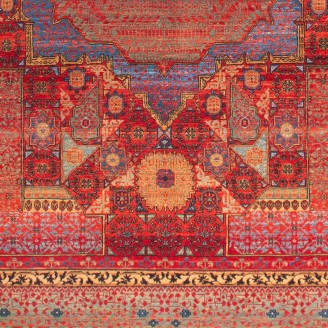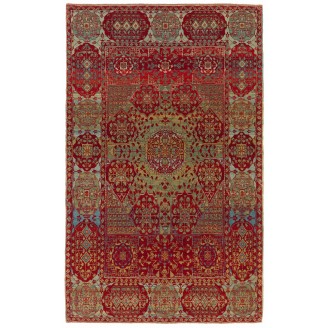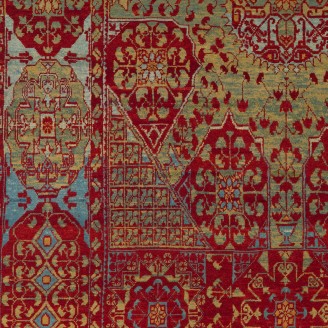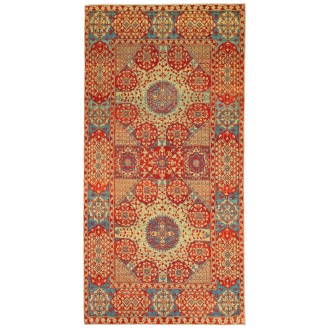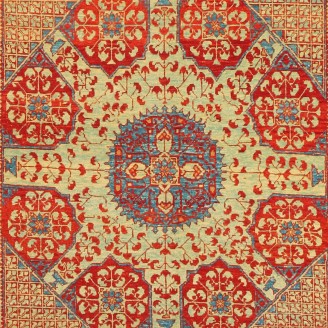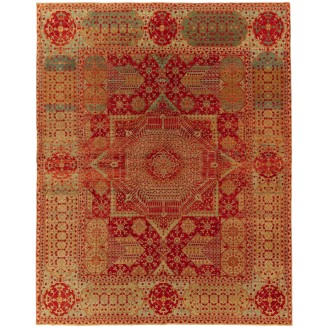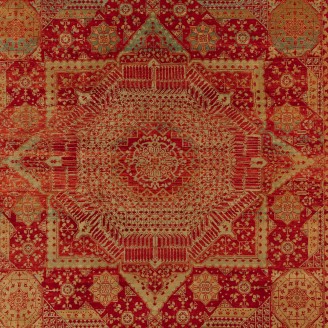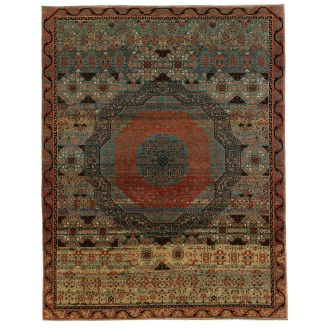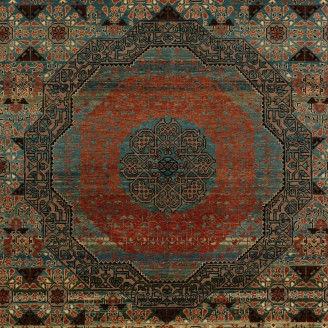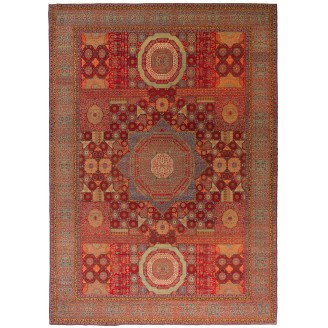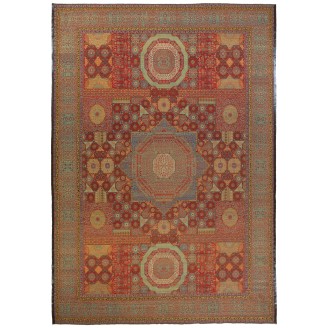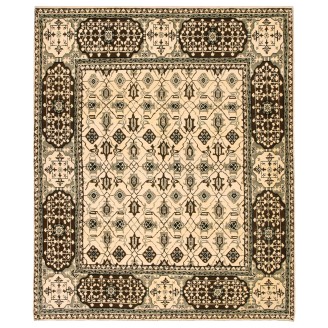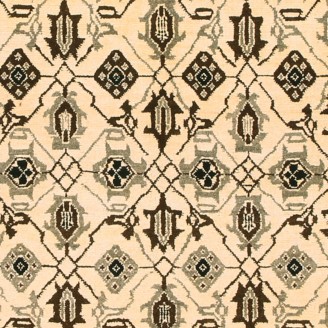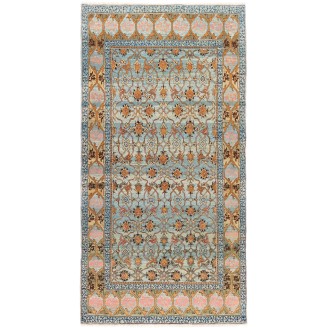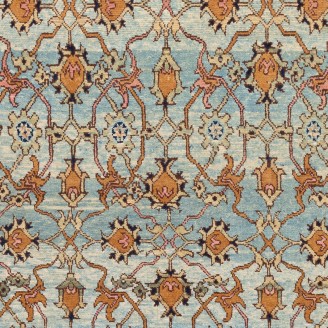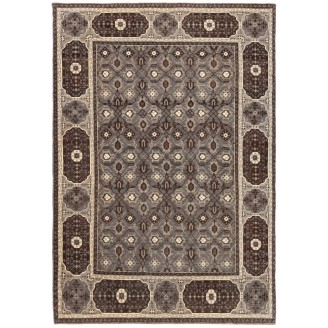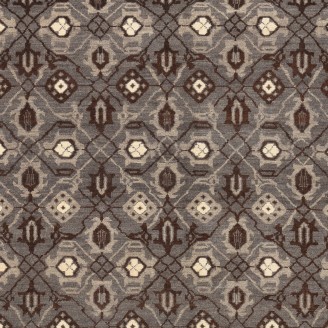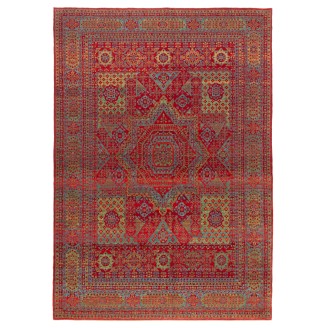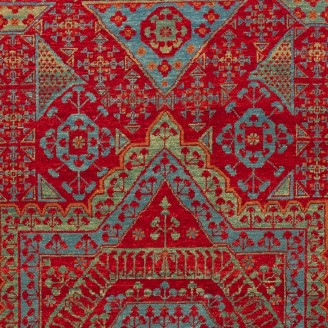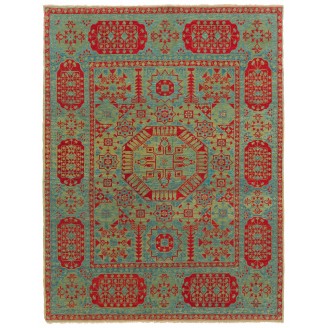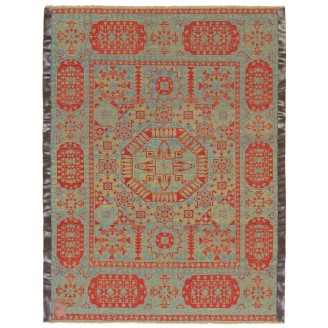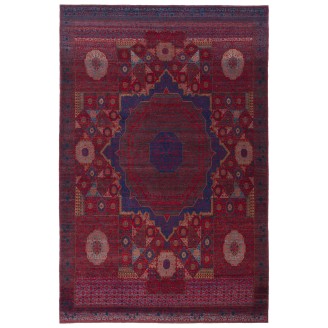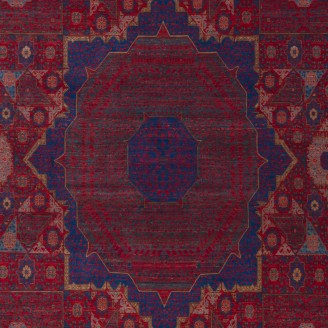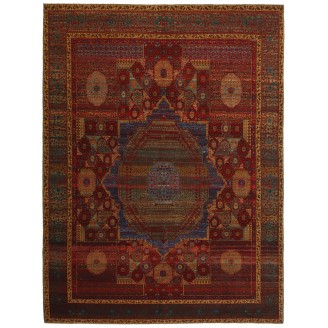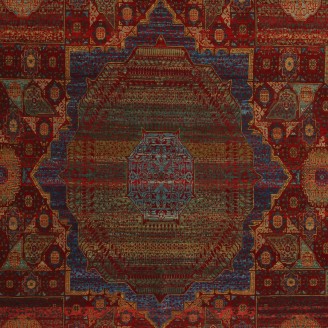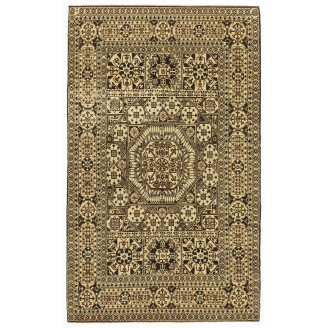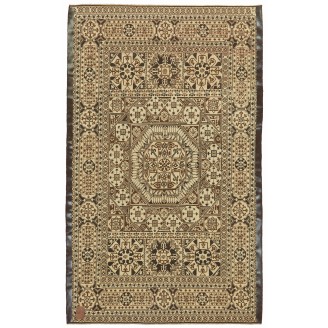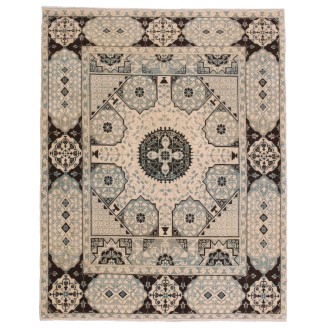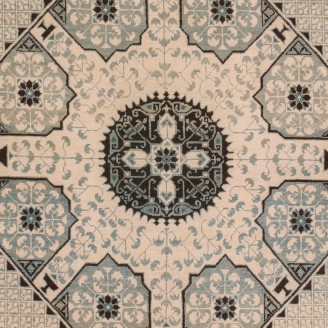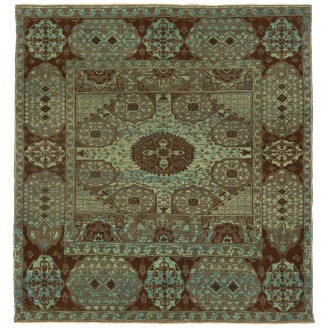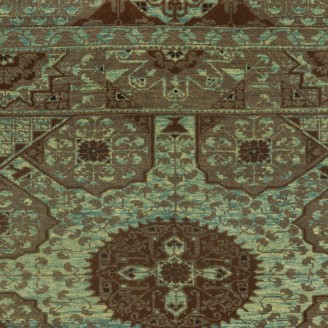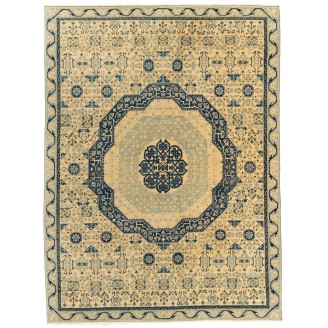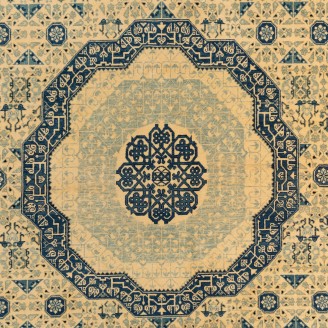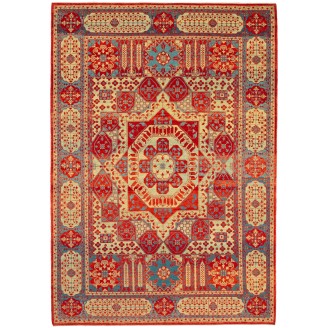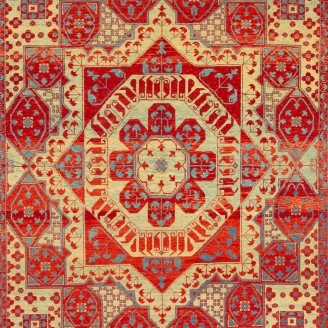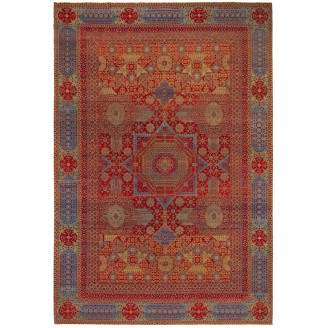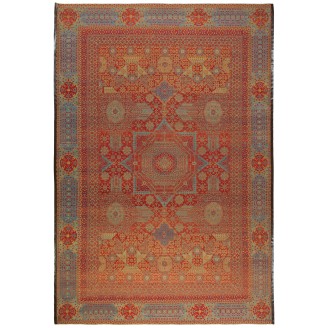COLLECTION OF MAMLOUK RUGS
The Renaissance of Islamic Art. We've brought the 14th-century Mamlouk rugs back to life
Model: ART00697
Dimensions: 4'1" X 5'10"(126cm x 179cm)
Luxurious Mamluk RugExquisite handwoven Mamluk rug from Eastern Turkiye, featuring intricate geometric patterns and vibrant natural dyes. This luxurious rug showcases the traditional craftsmanship and rich history of Oriental rug-making.
This rug boasts a harmonious blend of 3 natural colors, eac..
Price:
$4,300
Ex Tax:$4,300
Model: ART00753
Dimensions: 4'2" X 5'8"(127cm x 175cm)
Luxurious Mamluk Rug
Exquisite handwoven Mamluk rug from Eastern Turkiye, featuring intricate geometric patterns and vibrant natural dyes. This luxurious rug showcases the traditional craftsmanship and rich history of Oriental rug-making.
This rug boasts a harmonious blend of 3 natural colors,..
Price:
$4,200
Ex Tax:$4,200
Model: ART00037
Dimensions: 8'1" X 9'10"(248cm x 302cm)
The source of the rug comes from the book Völker, Angela, Die orientalischen Knüpfteppiche das MAK, Vienna: Böhlau, 2001: 42–5. This rug with the central star was designed in the early 16th-century rug by Mamluk Sultane of Cairo, Egypt. It is exhibited at MAK – Museum of Applied Arts, Vienna Austria..
Price:
$22,500
Ex Tax:$22,500
Model: ART00586
Dimensions: 7'6" X 4'8"(231cm x 143cm)
The source of the rug comes from the book Renaissance of Islam, Art of the Mamluks, Esin Atil, Smithsonian Institution Press, Washington D.C., 1981 nr.125. This a rug with a cup motif design, a late 15th-century rug from Mamluk Sultane of Cairo, Egypt. It is exhibited at the Washington D.C. The..
Price:
$6,600
Ex Tax:$6,600
Model: ART00144
Dimensions: 4'10" X 9'10"(149cm x 300cm)
The source of the rug comes from the book Renaissance of Islam, Art of the Mamluks, Esin Atil, Smithsonian Institution Press, Washington D.C., 1981 nr.125. This a rug with a cup motif design late 15th-century rug from Mamluk Sultane of Cairo, Egypt. It is exhibited at the Washington D.C. The Textile..
Price:
$7,700
Ex Tax:$7,700
Model: ART00058
Dimensions: 8'4" X 10'4"(254cm x 316cm)
The source of carpet comes from the book How to Read - Islamic Carpets, Walter B. Denny, The Metropolitan Museum of Art, New York 2014 fig.61,62. The five-star-medallion carpet was designed in the early 16th century by Mamluk Sultane of Cairo, Egypt. It is exhibited at The Metropolitan Museum of Art..
Price:
$14,400
Ex Tax:$14,400
Model: ART00390
Dimensions: 4'11" X 6'5"(152cm x 197cm)
The design source of the rug comes from The C. L. David Collection, Copenhagen. This rug with the Cusped Medallion was designed in the early 16th-century rug by Mamluk Sultane of Cairo, Egypt. Once in the Hirth Collection, and later with Ulrich Schürmann in 1965, this piece now belongs to the David ..
Price:
$5,100
Ex Tax:$5,100
Model: ART00733
Dimensions: 13'6" X 19'1"(413cm x 584cm)
Origin and InspirationThe Mamlouk Rug is a contemporary masterpiece that draws its inspiration from the rich textile traditions of the Mamlouk Sultanate, which reigned over Egypt and the Levant from the 13th to the 16th centuries. Renowned for their intricate geometric patterns and harmonious c..
Price:
$82,000
Ex Tax:$82,000
Model: ART00266
Dimensions: 5'0" X 6'1"(154cm x 187cm)
The source of carpet comes from the Mercer Collection Sotheby's 2000 (catalog cover). This Mamluk-Cairene carpet is known, curiously featuring some type of lattice was designed in the early 16th-century rug by Mamluk Sultane of Cairo, Egypt. This piece from the Bavarian National Museum in Munich is ..
Price:
$4,800
Ex Tax:$4,800
Model: ART00270
Dimensions: 4'1" X 7'10"(126cm x 241cm)
The source of the carpet comes from the Mercer Collection Sotheby's 2000 (catalog cover). This Mamluk-Cairene carpet is known, curiously featuring some type of lattice was designed in the early 16th-century rug by Mamluk Sultane of Cairo, Egypt. This piece from the Bavarian National Museum in Munich..
Price:
$5,200
Ex Tax:$5,200
Model: ART00280
Dimensions: 4'11" X 7'1"(151cm x 217cm)
The source of the carpet comes from the Mercer Collection Sotheby's 2000 (catalog cover). This Mamluk-Cairene carpet is known, curiously featuring some type of lattice was designed in the early 16th-century rug by Mamluk Sultane of Cairo, Egypt. This piece from the Bavarian National Museum in Munich..
Price:
$5,600
Ex Tax:$5,600
Model: ART00028
Dimensions: 6'7" X 9'3"(202cm x 284cm)
The source of the rug comes from the Textile Museum, Washington D.C. inv. R 16.2.4. This rug with the central star was designed in the early 16th-century rug by Mamluk Sultane of Cairo, Egypt. Acquired by Mr.Myers at the 1926 Benguiat Sale("a Damascus Gothic Carpet") and exhibited at the 1947 Chicag..
Price:
$16,300
Ex Tax:$16,300
Model: ART00701
Dimensions: 4'3" X 5'6"(132cm x 170cm)
Introducing the exquisite Mamluk Rug with Central Star (Model: ART00701) from Ararat Rugs, a masterpiece that embodies the rich heritage of Mamlouk artistry. Handcrafted with meticulous attention to detail, this rug showcases the distinctive geometric patterns and vibrant colors characteri..
Price:
$4,200
Ex Tax:$4,200
Model: ART00013
Dimensions: 8'9" X 13'6"(268cm x 413cm)
The source of the rug comes from the book Völker, Angela, Die orientalischen Knüpfteppiche das MAK, Vienna: Böhlau, 2001: 42–5. This rug with the central star was designed in the early 16th-century rug by Mamluk Sultane of Cairo, Egypt. It is exhibited at MAK – Museum of Applied Arts, Vienna Austria..
Price:
$29,000
Ex Tax:$29,000
Model: ART00014
Dimensions: 7'10" X 10'4"(239cm x 315cm)
The source of the rug comes from the book Völker, Angela, Die orientalischen Knüpfteppiche das MAK, Vienna: Böhlau, 2001: 42–5. This rug with the central star was designed in the early 16th-century rug by Mamluk Sultane of Cairo, Egypt. It is exhibited at MAK – Museum of Applied Arts, Vienna Austria..
Price:
$22,500
Ex Tax:$22,500
Model: ART00728
Dimensions: 7'6" X 4'7"(229cm x 140cm)
This rug with the central star was designed in the early 16th-century rug by Mamluk Sultane of Cairo, Egypt. Attempting to read early carpets produced in workshops in Cairo provides an entirely different set of challenges. Cairene carpets, distinguished by their limited color palette, symmetrical kn..
Price:
$6,412
Ex Tax:$6,412
Model: ART00285
Dimensions: 4'9" X 6'0"(147cm x 185cm)
The source of the rug comes from the book Renaissance of Islam, Art of the Mamluks, Esin Atil, Smithsonian Institution Press, Washington D.C., 1981 nr.125. This a rug with a cup motif design, a late 15th-century rug from Mamluk Sultane of Cairo, Egypt. It is exhibited at the Washington D.C. The Text..
Price:
$4,700
Ex Tax:$4,700
Model: ART00331
Dimensions: 4'10" X 5'1"(148cm x 157cm)
The source of the rug comes from the book Renaissance of Islam, Art of the Mamluks, Esin Atil, Smithsonian Institution Press, Washington D.C., 1981 nr.125. This a rug with a cup motif design late 15th-century rug from Mamluk Sultane of Cairo, Egypt. It is exhibited at the Washington D.C. The Textile..
Price:
$3,800
Ex Tax:$3,800
Model: ART00339
Dimensions: 5'0" X 6'7"(153cm x 201cm)
The design source of the rug comes from The C. L. David Collection, Copenhagen. This rug with the Cusped Medallion was designed in the early 16th-century rug by Mamluk Sultane of Cairo, Egypt. Once in the Hirth Collection, and later with Ulrich Schürmann in 1965, this piece now belongs to the David ..
Price:
$5,300
Ex Tax:$5,300
Model: ART00201
Dimensions: 6'9" X 9'6"(206cm x 290cm)
The source of the rug comes from the book Renaissance of Islam, Art of the Mamluks, Esin Atil, Smithsonian Institution Press, Washington D.C., 1981 nr.126. This rug with palm trees and cypresses was designed in the late 15th-century rug by Mamluk Sultane of Cairo, Egypt. It is exhibited at the Washi..
Price:
$14,000
Ex Tax:$14,000
Model: ART00741
Dimensions: 11'10" X 17'4"(362cm x 529cm)
This magnificent oversized Mamluk rug is a masterwork of geometry, harmony, and historical reverence. Woven entirely by hand using handspun wool and natural vegetable dyes, it channels the enduring elegance of 15th-century Cairo into a contemporary format suited for grand interiors.The design is cen..
Price:
$65,000
Ex Tax:$65,000
